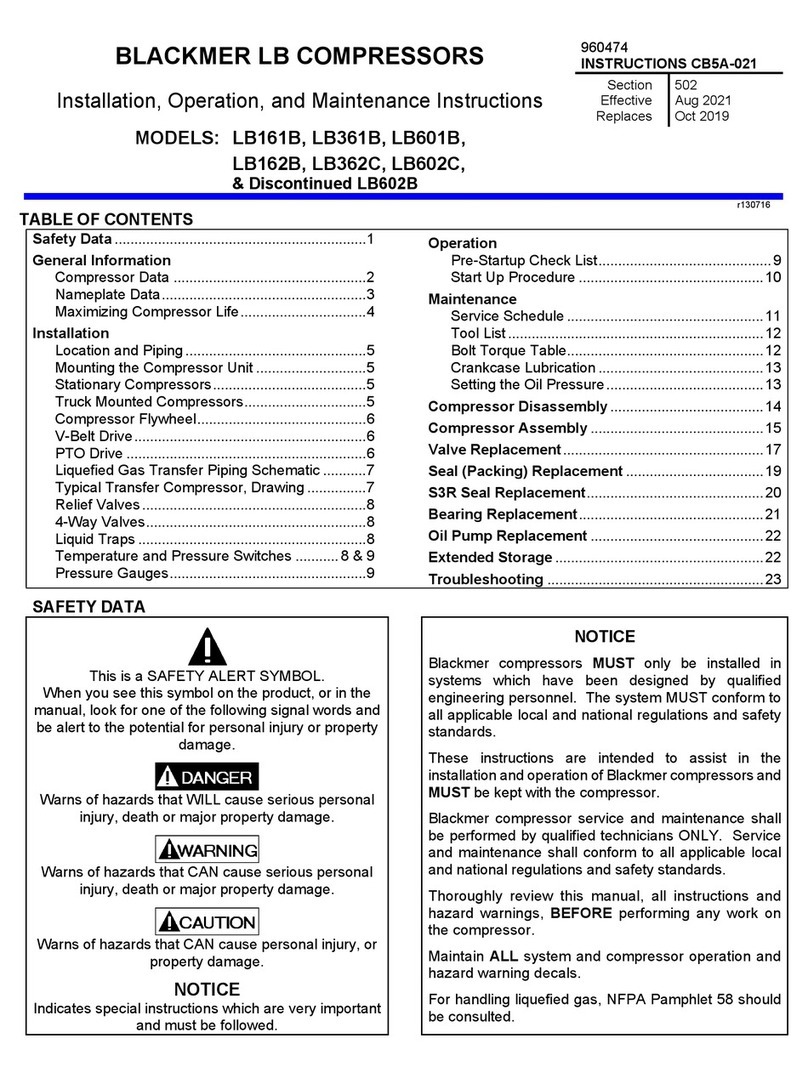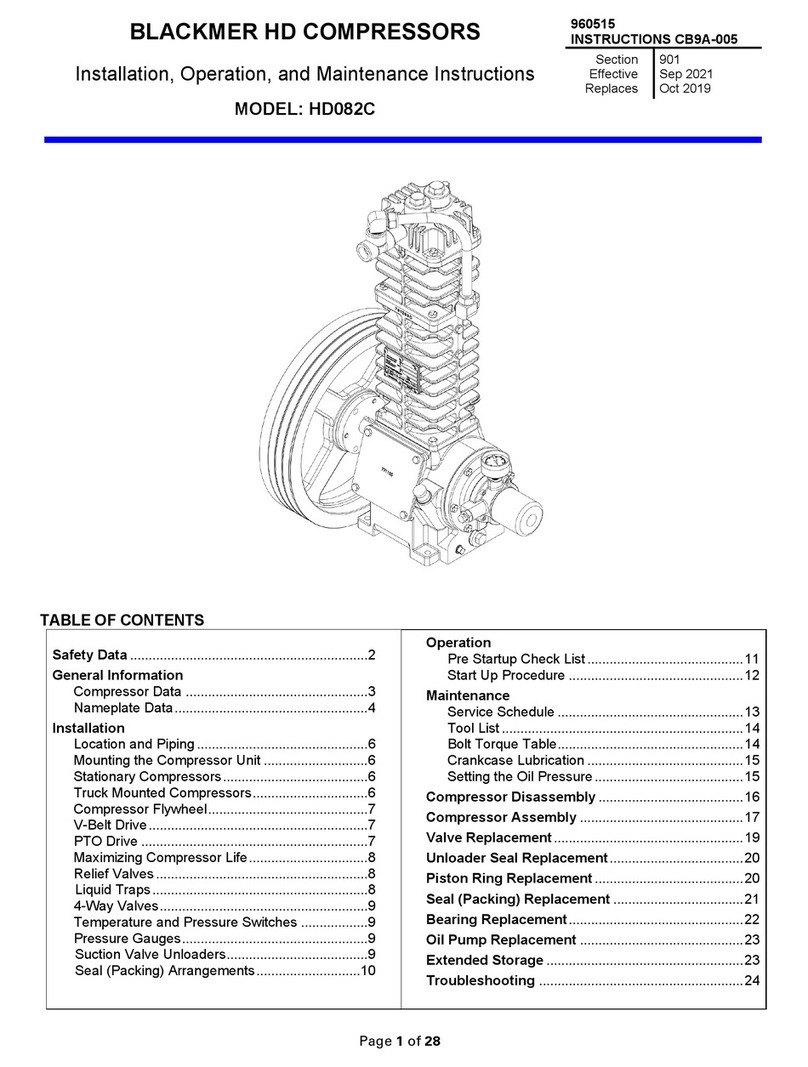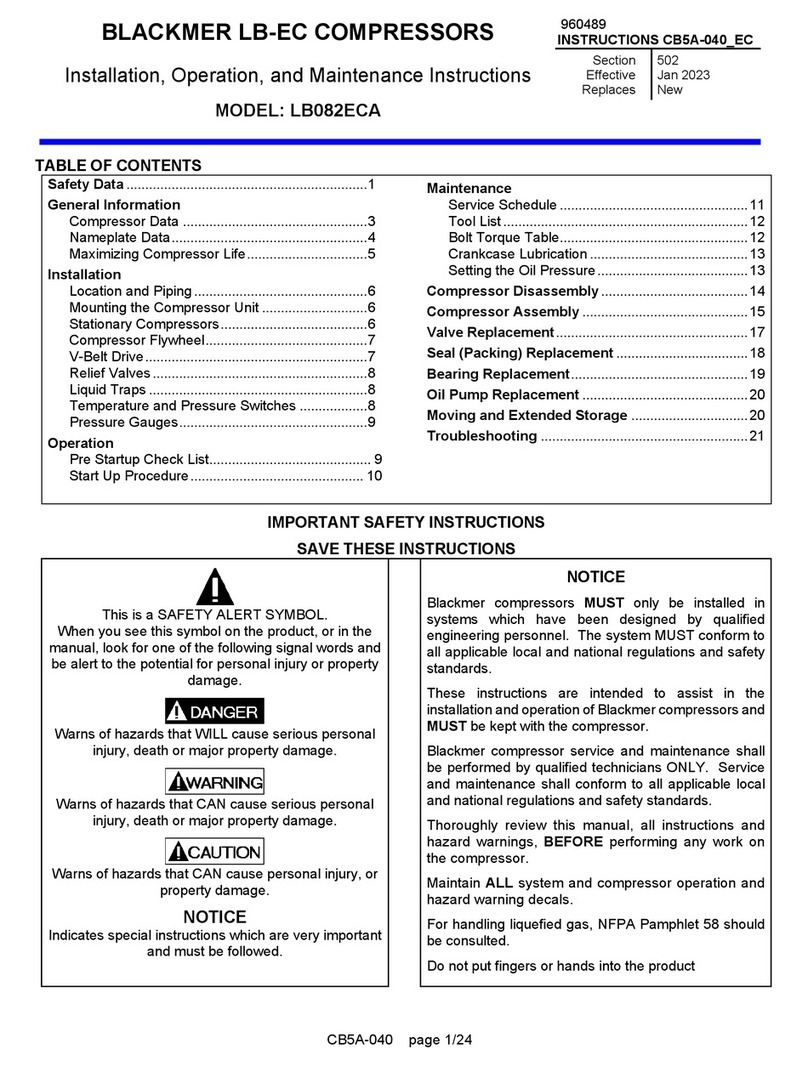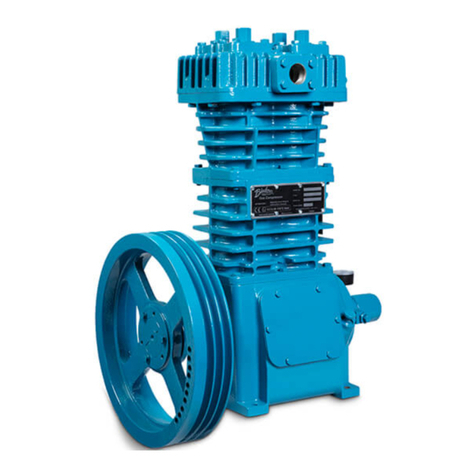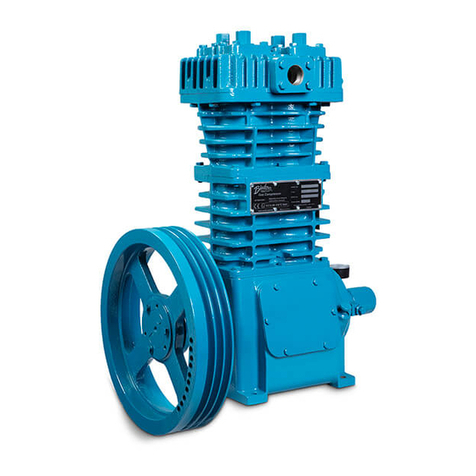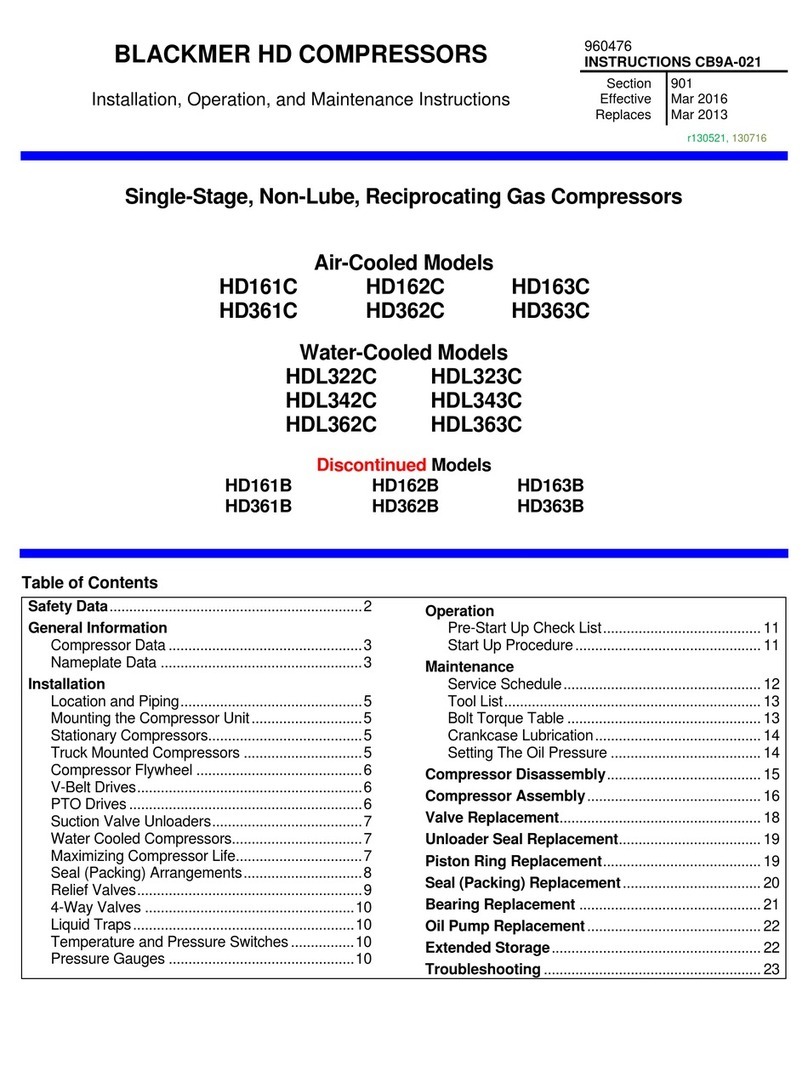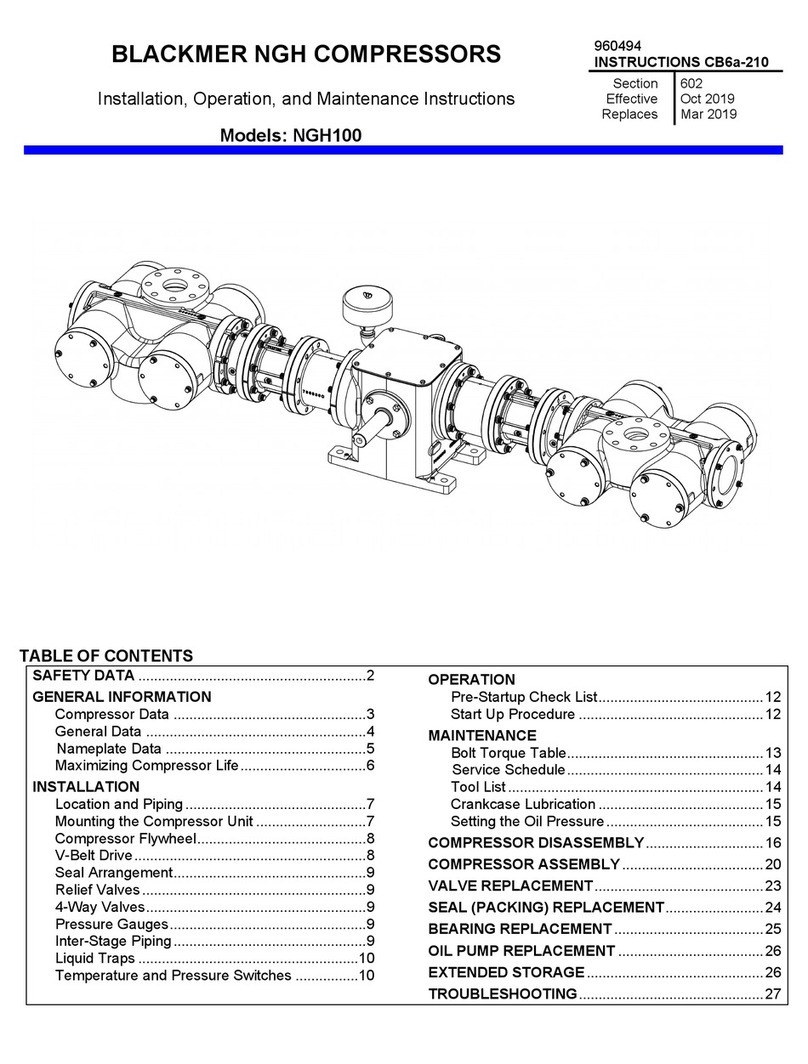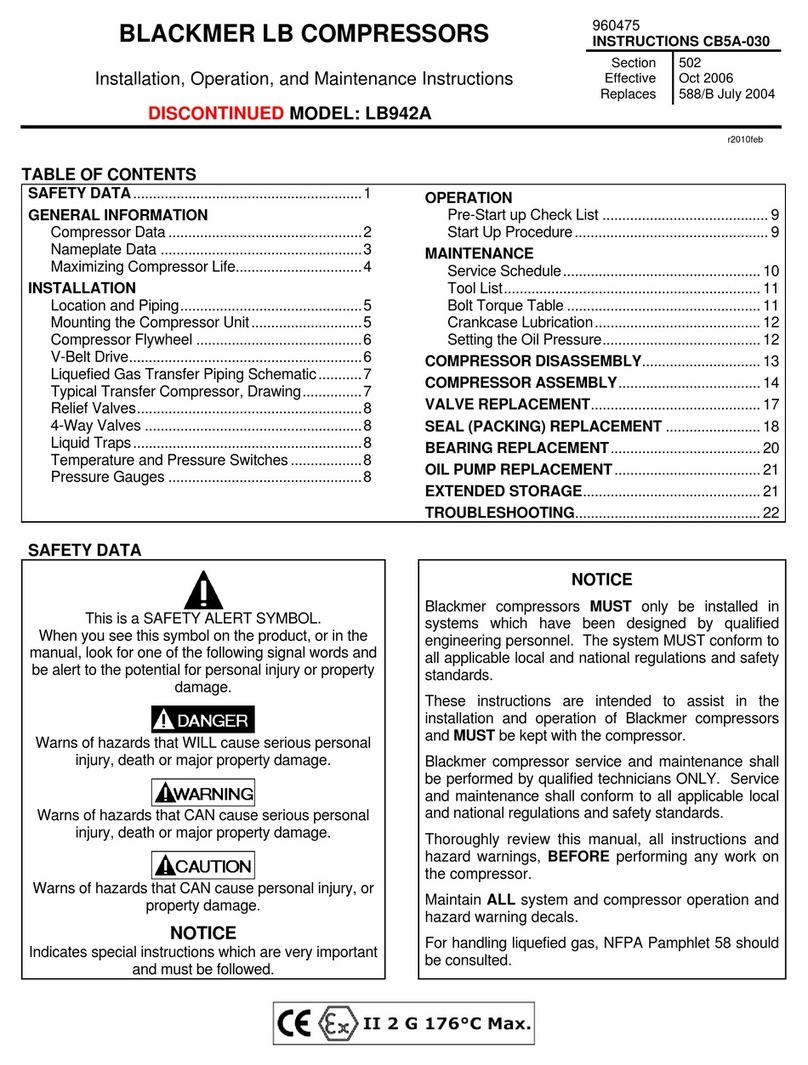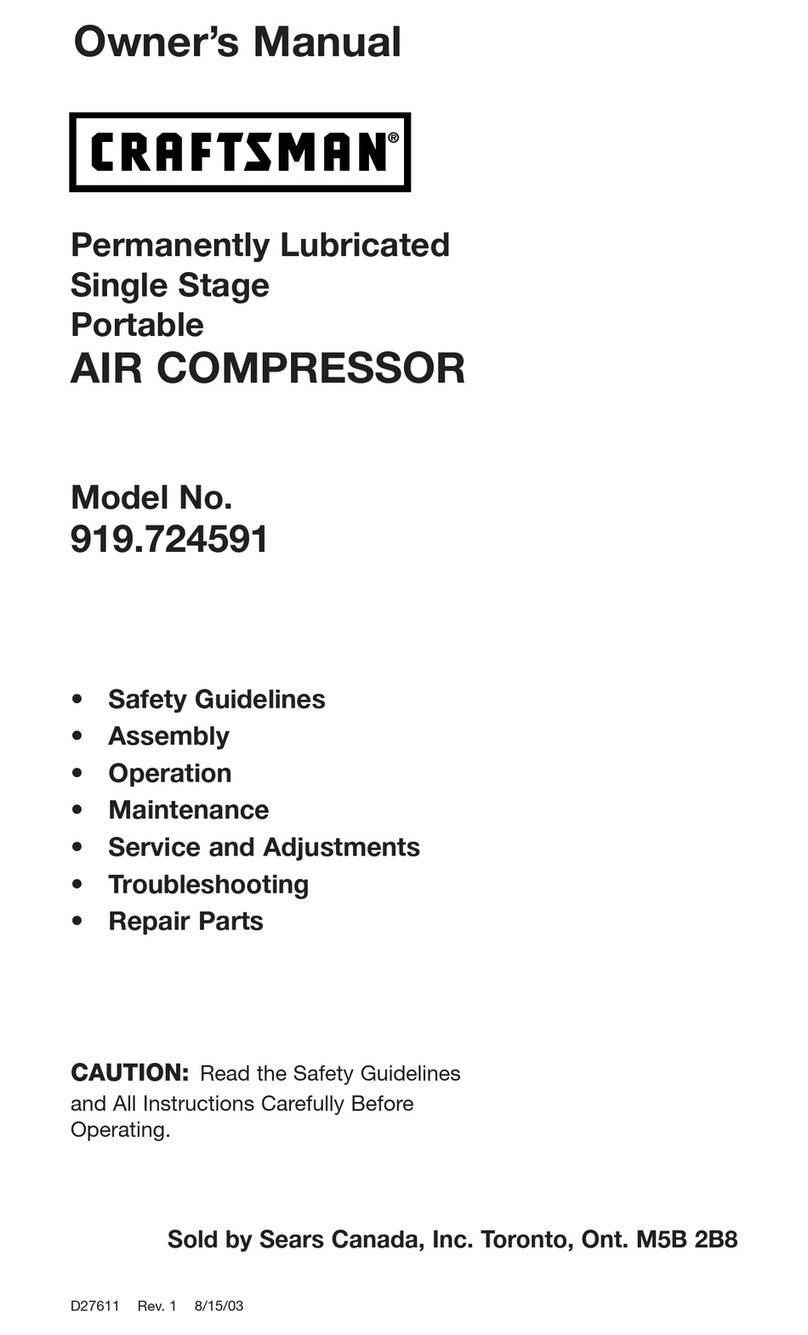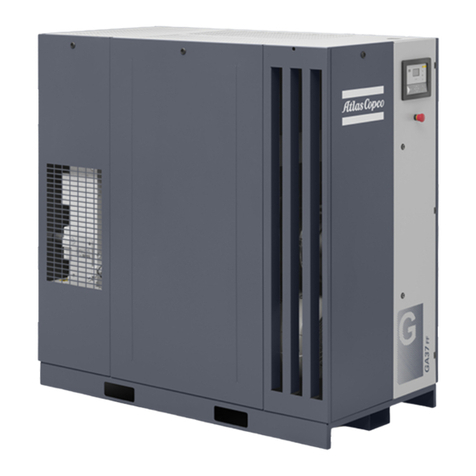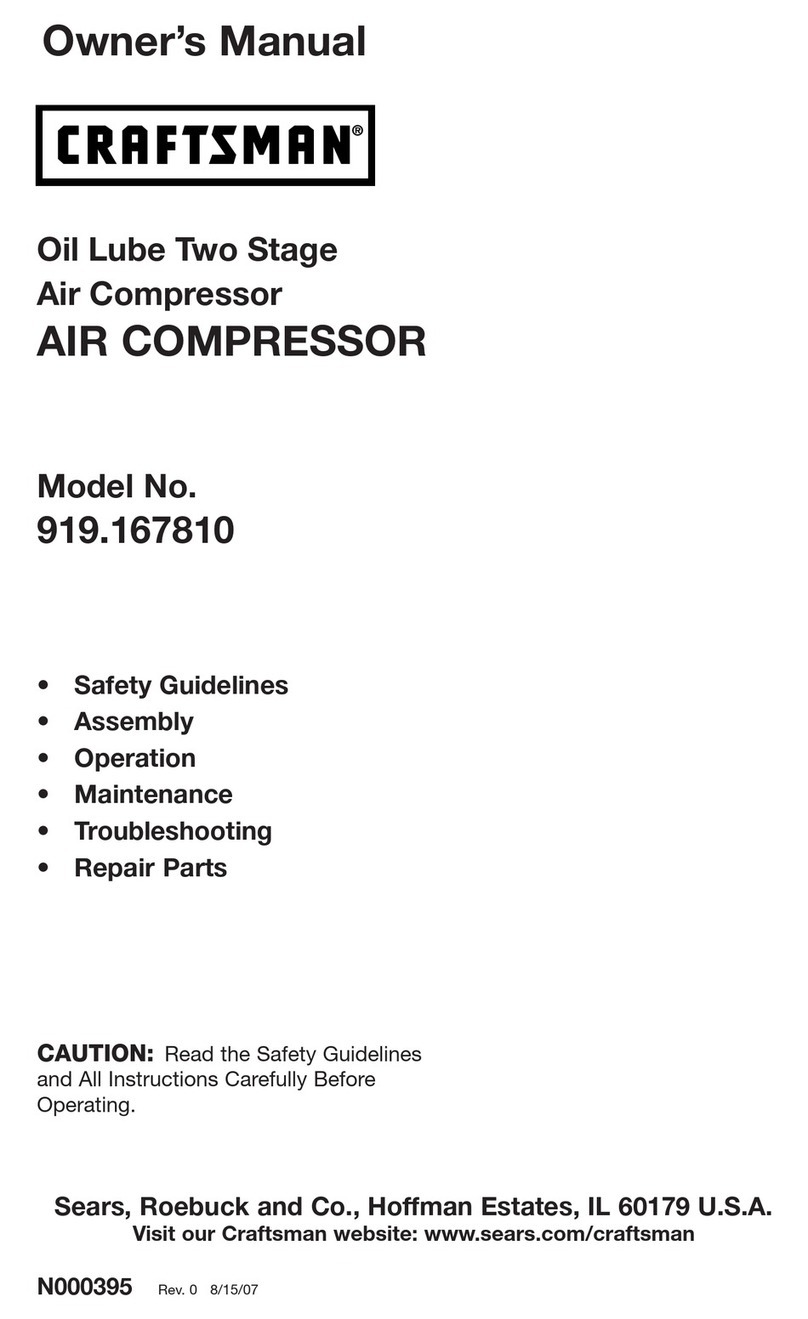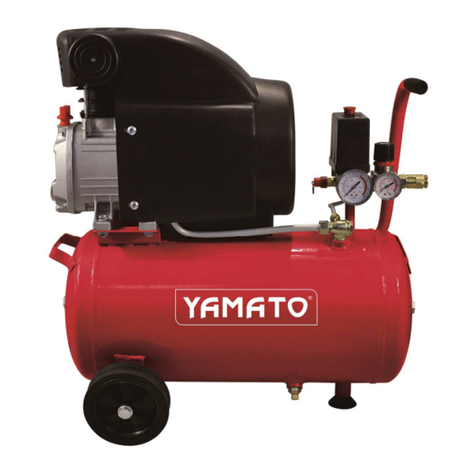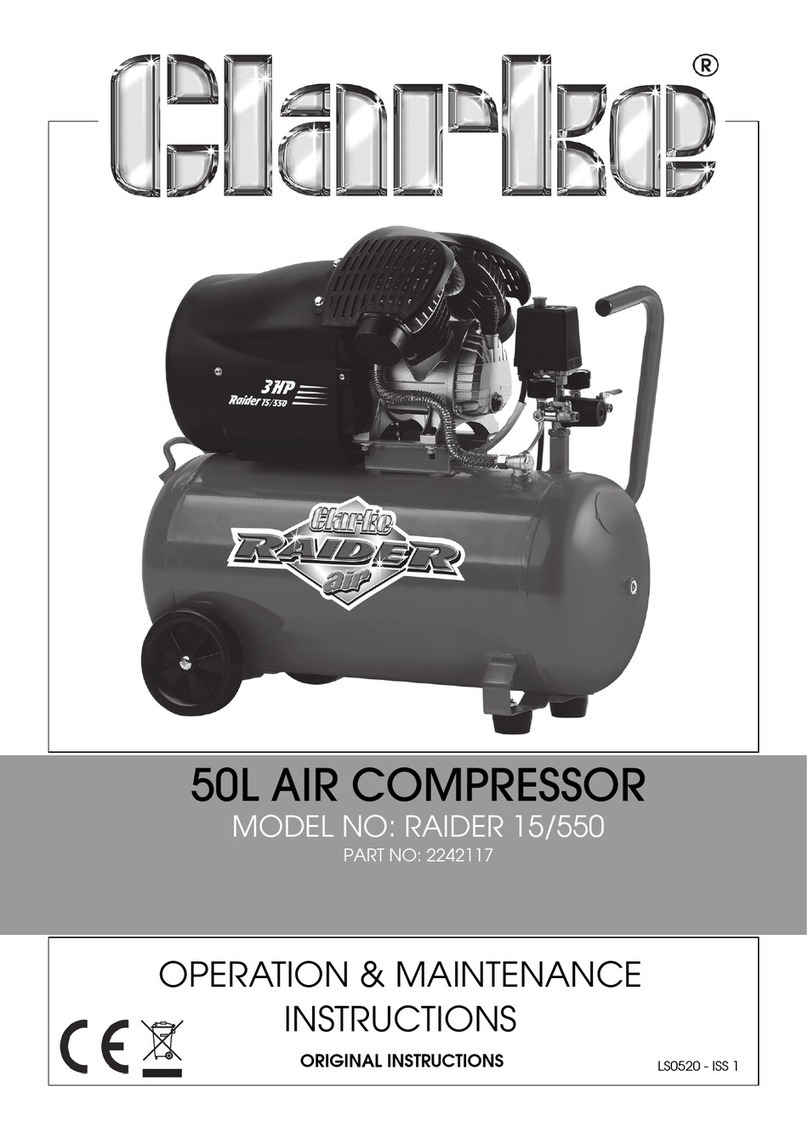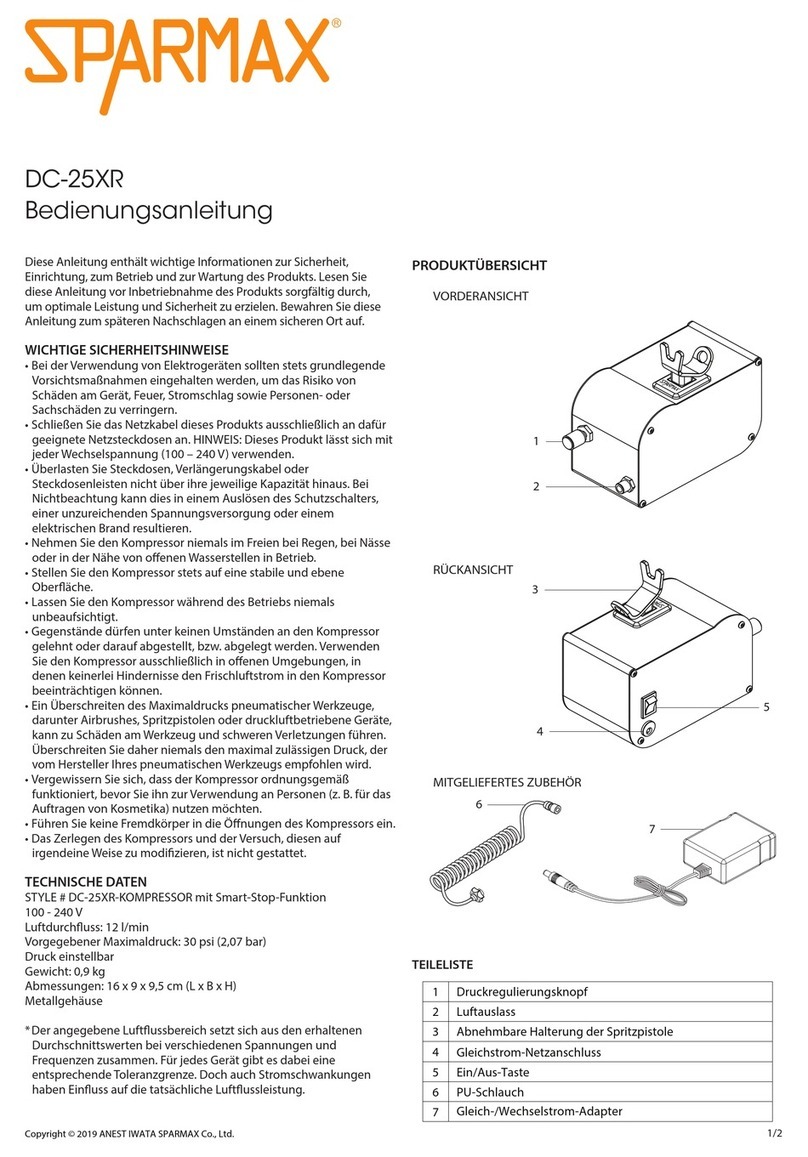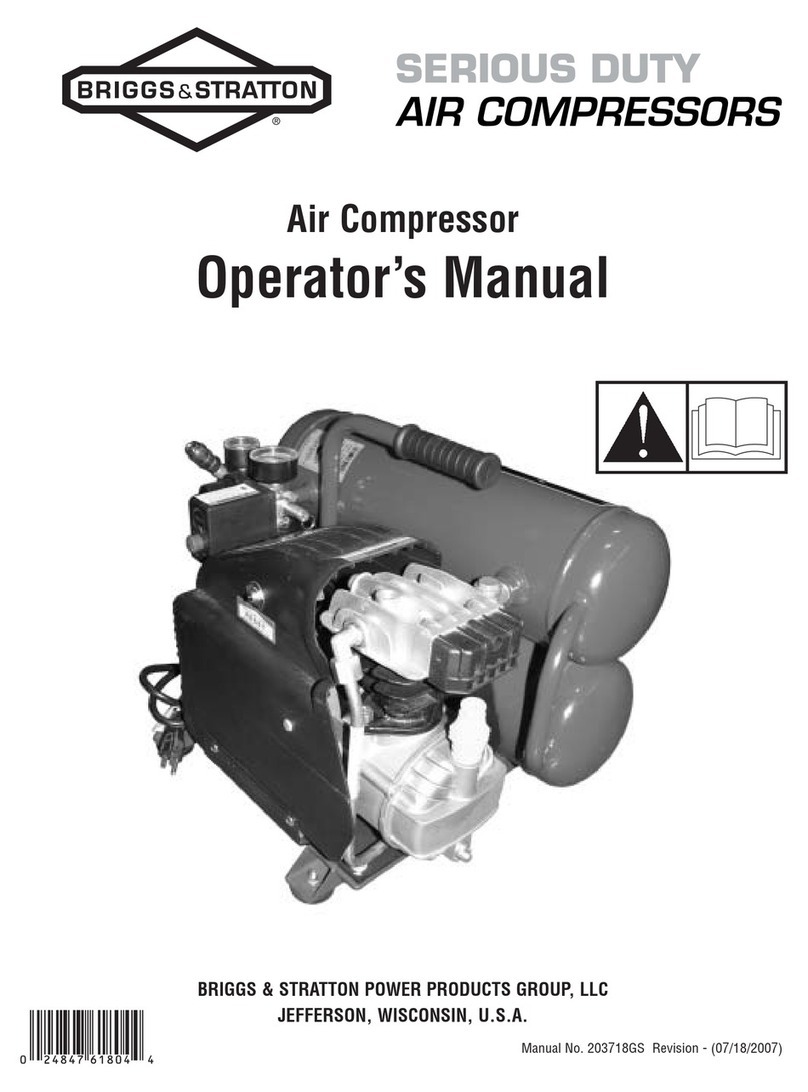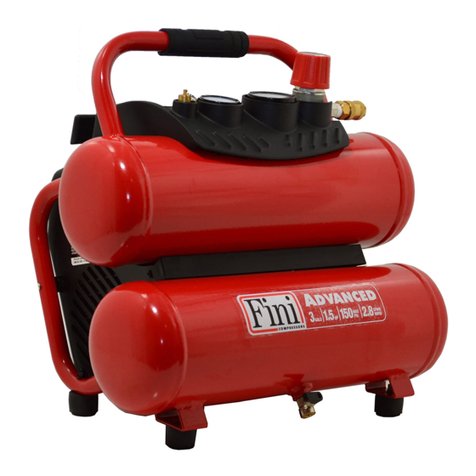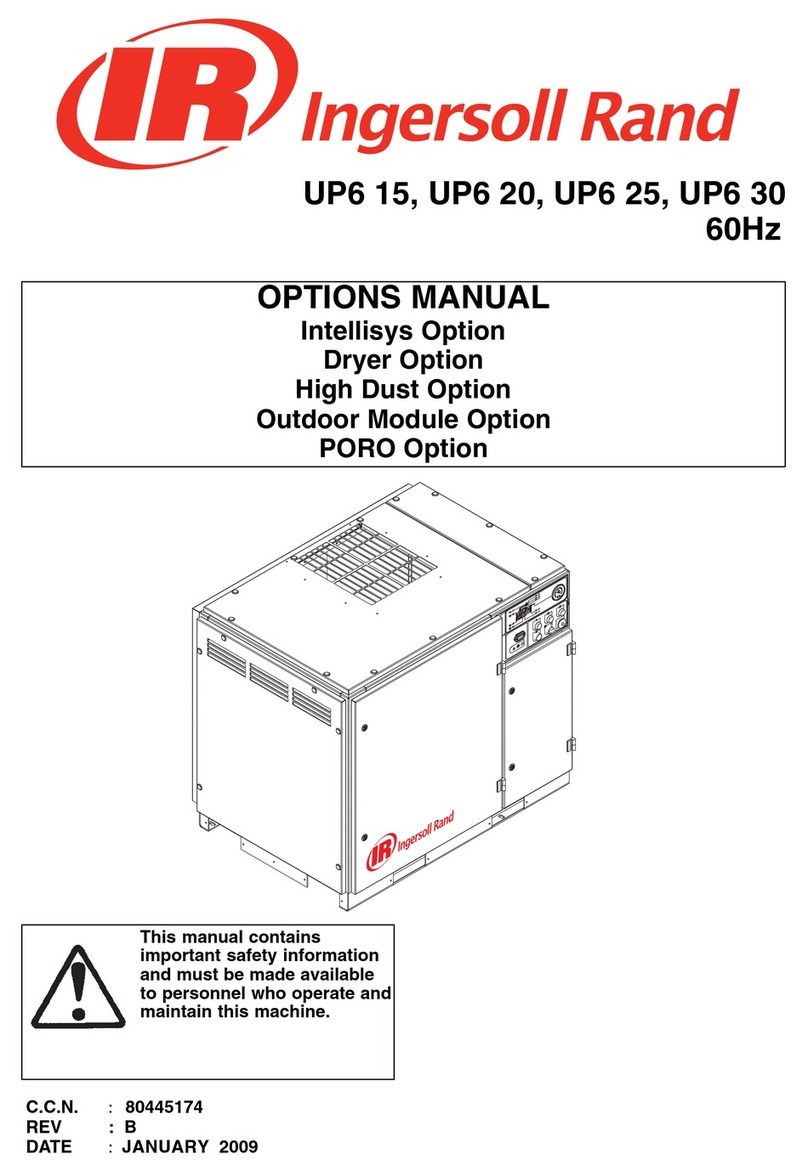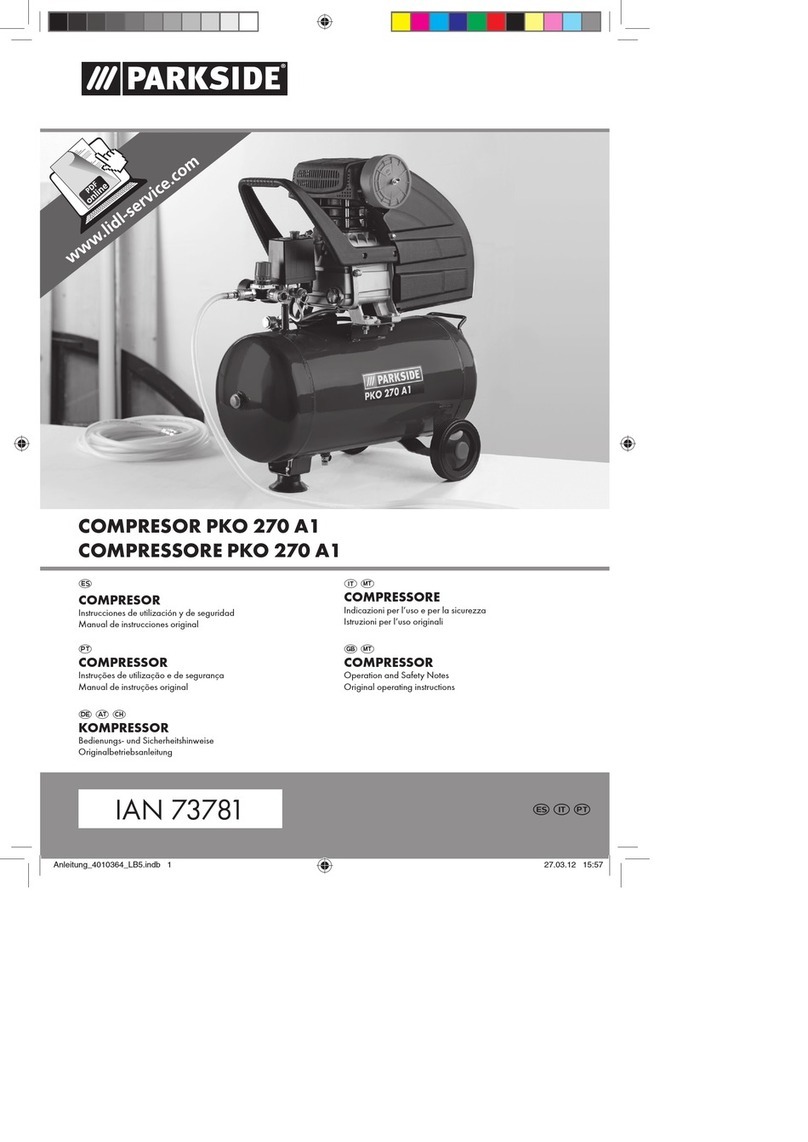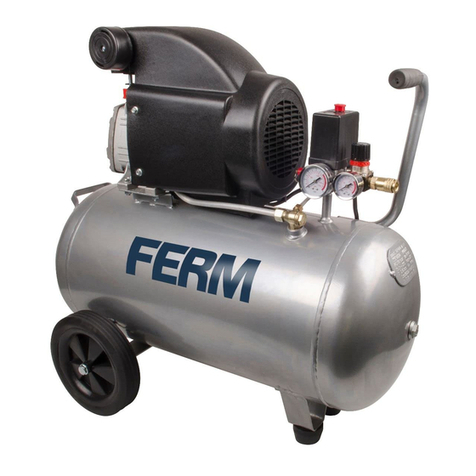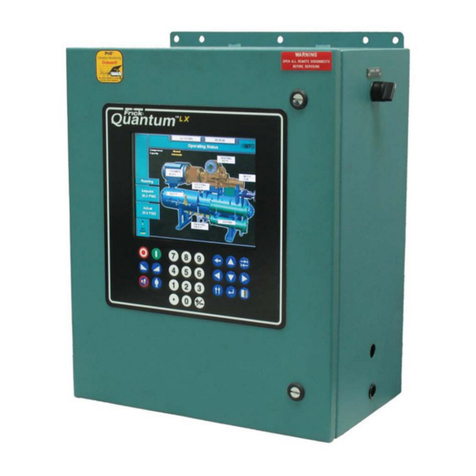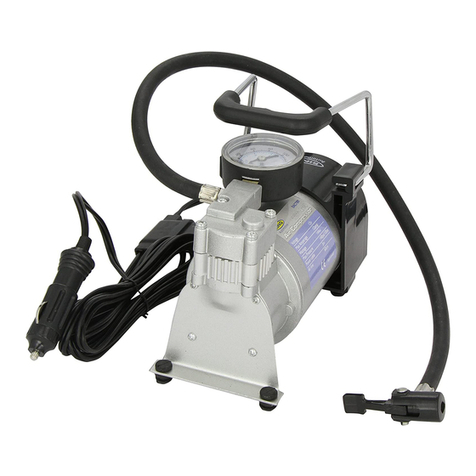
INSTALLATION
CB6A-012 page 8/24
RELIEF VALVES
A relief valve of a type, material and pressure rating
suitable to the installation, MUST be installed. The relief
valve shall be installed in the discharge line between the
compressor head and the first block valve.
Compressor operating against closed
valve can cause system component
failure, personal injury or property
damage.
Hazardous pressure
can cause serious
personal injury or
property damage
Since all systems differ in design, care must be taken to
ensure the relief valve is installed to safely vent away
from sources of ignition and personnel. This can be
accomplished by either orientation or a pipe away,
consult the Relief Valve manufacture for assistance.
Operation of the relief valve can release
explosive gas to the atmosphere
creating an explosion hazard, possibly
causing personal injury or death
Hazardous gases
can cause property
damage, personal
Should the Relief Valve actuate, the cause MUST be
determined and corrected before continuing operations.
See the 'Troubleshooting' section.
TEMPERATURE SWITCHES
Excessive discharge temperature is a leading cause of
premature component failure and is often an early
warning sign of impending problems.
Optional temperature switches should be installed with a
thermowell as close to the compressor discharge as
possible. The switch should be set to actuate at a
temperature just above the maximum operating
temperature of the compressor.
ATEX compliant compressors must have a temperature
switch installed.
LOW OIL PRESSURE SWITCHES
Loss of crankcase oil pressure is a rare occurrence, but
can result in costly damage. An optional low oil pressure
switch set at about 15 psig (1 bar-g) may be installed to
shut down the compressor in the event of a lubrication
failure. A 10 second delay timer should be used to lock
the low oil pressure switch out during compressor
startup.
PRESSURE SWITCHES
Pressure switches may be installed in the suction or
discharge gas stream as protective devices, for
compressor control, or for other uses varying with each
application and system design.
PRESSURE GAUGES
Install pressure gauges in the discharge and inlet lines to
verify actual suction and discharge pressures.
Optional liquid trap level switches,
temperature switches, pressure
switches or other electrical devices
must be properly specified for
applications using explosive gases.
Hazardous gases
can cause property
damage, personal
INTERSTAGE PIPING / COOLING
2-Stage Models: Generally, an interstage cooler should
be used between the 1st stage discharge and the 2nd
stage. Cooling must be sufficient to prevent excessive
temperatures in the 2nd stage; typically 100 – 125°F (38
– 52 C°). If interstage cooling is sufficient to cause
condensation, the resultant liquid must be removed prior
to entering the 2nd stage (see LIQUID TRAPS).
SUCTION VALVE UNLOADERS
Compressors may be fitted with suction valve unloaders
to provide loadless start or capacity control functions.
Blackmer unloaders are basically a piston and a plunger
atop the suction valve. When pressure is applied to the
top of the unloader piston, it and the plunger move
downward, pushing the suction valve off its seat and
unloading the compressor. When the pressure signal is
removed, the unloader spring pushes the piston and
plunger back up and the suction valve will resume normal
operation.
1. In order for the unloaders to function, the unloader
pressure must be at least 30 psi (2.1 Bar) above
suction pressure.
2. Do not operate unloaders for longer than 10 minutes
as gas recirculation through the suction valves will
cause overheating.
Excessive gas recirculation using
suction valve unloaders can be a source
of ignition in explosive atmospheres
causing severe personal injury or death
Hazardous gases
can cause property
damage, personal
injury or death
3. Do not place a restrictive device such as a back
check valve in the suction line near the compressor.
If such a device must be installed, the volume in the
piping between the device and the compressor must
be at least 10 times the cylinder swept volume.
